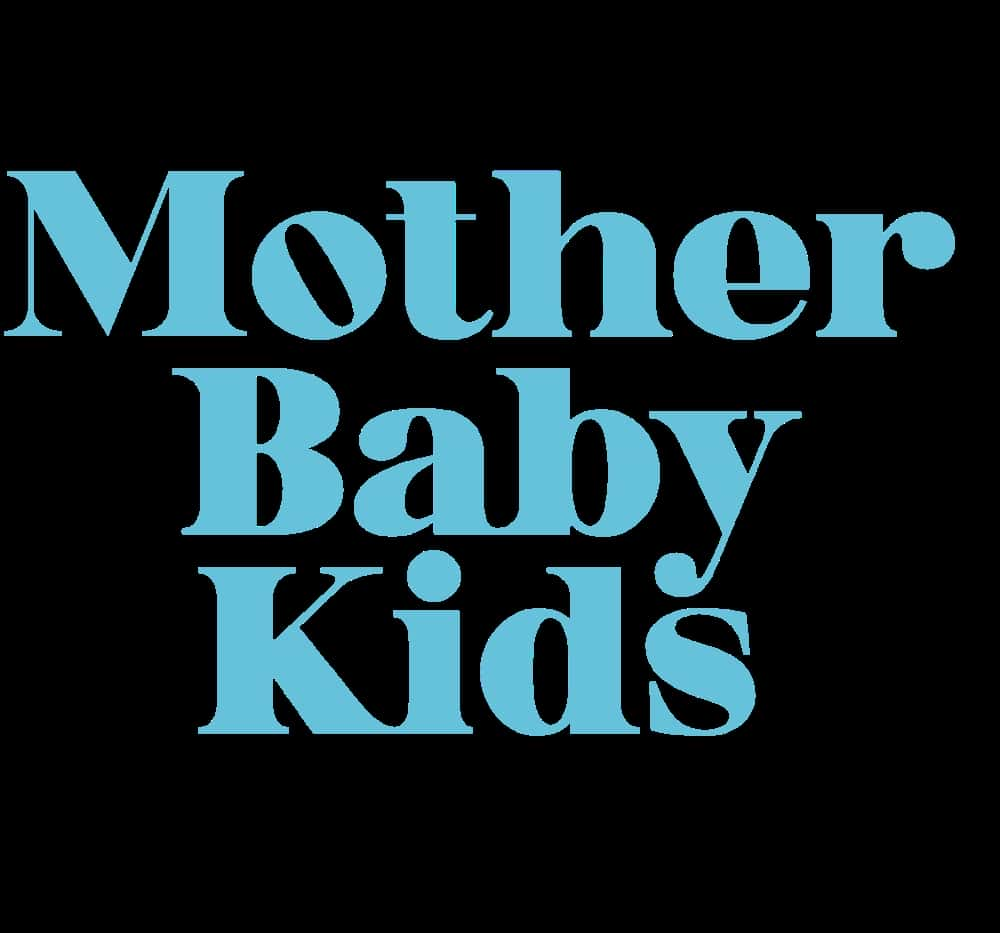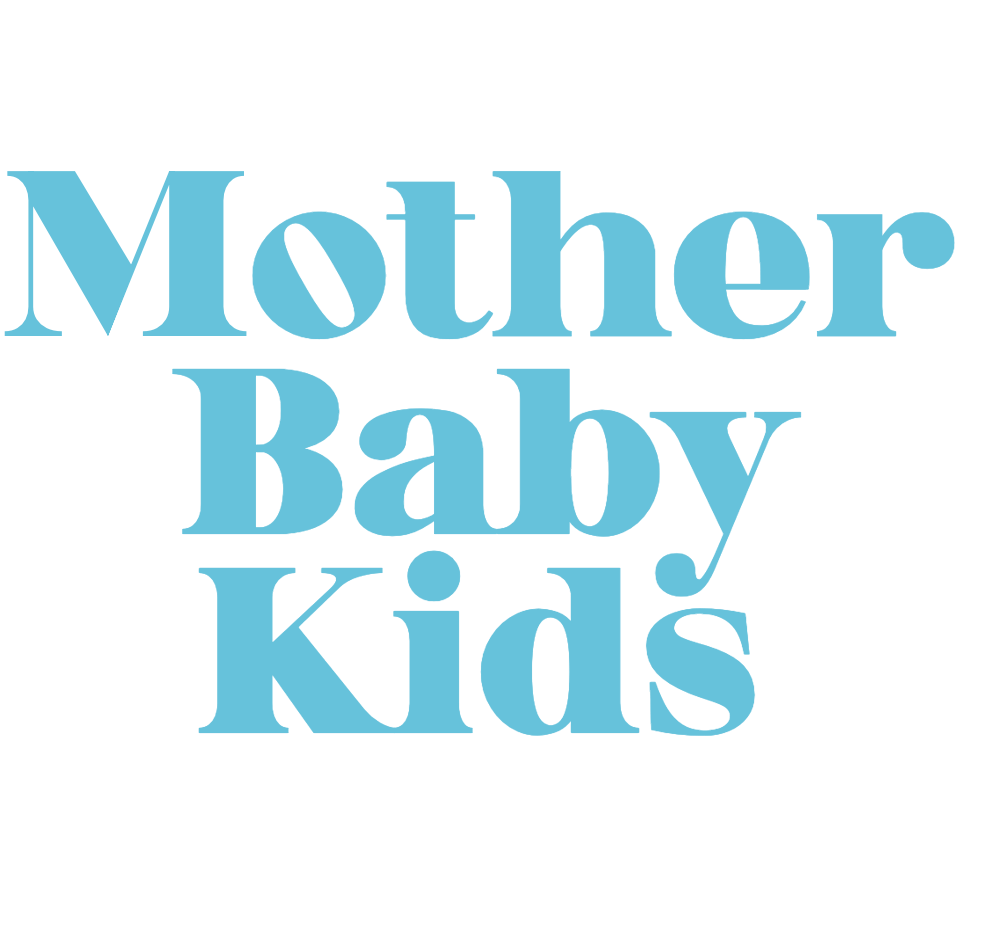Newborn Care
Top Newborn Care Plan Examples for Your Baby
Yearning for expert guidance on newborn care plans? Discover the essential strategies and considerations to ensure your baby's well-being.
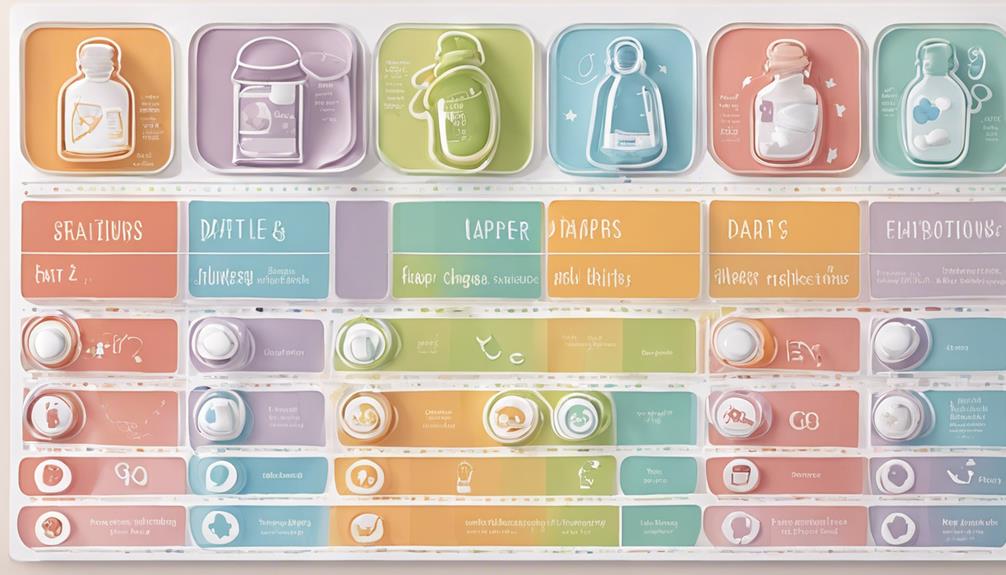
In terms of newborn care, it’s crucial to have a carefully crafted and customized plan ready.
But have you ever wondered what exactly goes into crafting these top newborn care plans?
From establishing feeding routines to monitoring important developmental milestones, these care plans offer a roadmap to guarantee the health and wellness of your little one.
But what specific strategies and considerations are key to creating an effective care plan that meets your baby's unique needs?
Let's explore the intricacies of these essential care plans together.
Key Takeaways
- Tailored breastfeeding care plans ensure successful feeding and comfort for the newborn.
- Consistent baby hygiene routines promote cleanliness and growth.
- Monitoring developmental milestones aids in early intervention and healthy growth.
- Establishing a complete immunization plan safeguards the baby against serious diseases.
Breastfeeding Care Plan
In our approach to newborn care, we prioritize creating tailored breastfeeding care plans to guarantee successful initiation and maintenance for both the newborn and the mother. Nursing care plans for breastfeeding encompass a thorough assessment that includes evaluating latch quality, milk transfer efficiency, and the comfort of the mother during feeding sessions.
Our interventions focus on providing precise positioning guidance to optimize latch, recommending appropriate feeding frequencies, and offering unwavering support to overcome any breastfeeding challenges that may arise. Educational breastfeeding techniques are a cornerstone of our care plans, ensuring that mothers are equipped with the knowledge of breastfeeding benefits, proper latch methods, and indicators of successful feeding sessions.
Continuous monitoring of newborn weight gain, hydration levels, and breastfeeding patterns allows us to adapt and refine our care plans to meet the evolving needs of both the baby and the mother, fostering a nurturing and successful breastfeeding journey.
Newborn Sleep Schedule

Creating a nurturing and conducive sleep environment is imperative for establishing a healthy newborn sleep schedule. Newborns have unique sleep patterns that require attention to detail and consistency in their sleep routine. Here are some essential points to take into account:
- Monitor Sleep Cues: Watch out for signs of tiredness like eye rubbing, yawning, or fussiness, as these cues indicate that your baby might need rest soon.
- Establish Routine Feedings: Newborns wake up every 2-3 hours for feeding, so make sure to incorporate these frequent nourishment sessions into their sleep schedule.
- Create a Calm Environment: Dim the lights, play soothing sounds, and maintain a peaceful atmosphere to help your baby relax and fall asleep easier.
- Recognize Signs of Tiredness: Being attentive to your baby's behavior can help you identify when they're getting sleepy and ready for sleep.
- Be Consistent: Stick to a regular sleep routine to help regulate your newborn's sleep patterns and promote better rest for both you and your baby.
Baby Hygiene Routine
Establishing a consistent and gentle baby hygiene routine is essential for safeguarding your little one's health and well-being. Proper skin care, regular diaper changes, and gentle bathing play vital roles in maintaining cleanliness and preventing infections.
When caring for your baby's delicate skin, opt for mild, baby-friendly products to avoid harsh chemicals that could cause irritation. Cleaning the umbilical cord stump with alcohol and ensuring it stays dry aids in the natural healing process.
By instilling good hygiene habits from the beginning, you're laying the foundation for your baby's lifelong health and well-being. Remember, every step you take in maintaining your baby's hygiene contributes to their overall wellness and happiness.
Prioritizing these routines not only keeps your baby clean and comfortable but also fosters a healthy environment for their growth and development.
Developmental Milestones Tracking
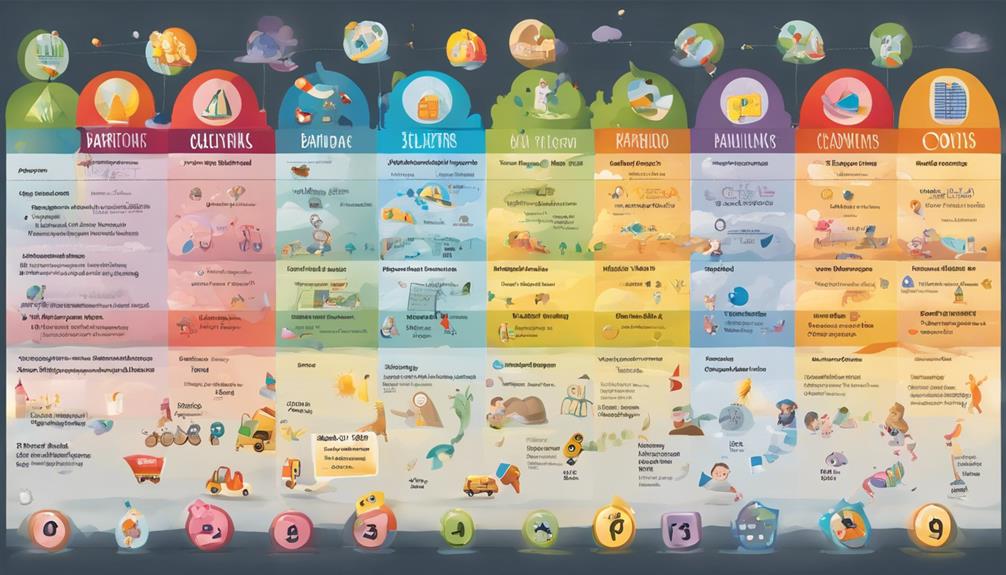
Monitoring your baby's developmental milestones is important for evaluating their progress in physical, cognitive, and social-emotional areas. Tracking these milestones allows us to observe their growth and development, making sure they're reaching key milestones within expected time frames.
Here are some key points to take into account when tracking your baby's developmental milestones:
- Developmental milestones encompass a range of activities like lifting their head, smiling, making eye contact, and grasping objects.
- Tracking these milestones helps identify any delays or concerns early on, allowing for timely intervention and support.
- It provides us with a guideline to make certain our baby is growing and developing at a healthy pace.
- Regular milestone tracking fosters a strong bond between parents and their child, enhancing our understanding of the baby's abilities and growth.
- If any concerns arise regarding our baby's progress, seeking professional advice can be beneficial in addressing any potential delays or challenges.
Baby Immunization Plan
When considering the well-being and development of your newborn, one important aspect that demands attention is establishing a complete baby immunization plan. Baby immunizations are essential for safeguarding newborns against potentially serious diseases and infections. Following the recommended vaccination schedule not only helps build immunity in your baby but also plays a significant role in preventing the spread of diseases within the community.
Newborns can start receiving immunizations as early as the first few days of life, with vaccines like hepatitis B, rotavirus, DTaP, and others being commonly administered. These childhood immunizations, including Hib, pneumococcal, polio, and influenza vaccines, are essential for providing thorough vaccine protection.
To make sure your baby receives the necessary immunizations on time, it's important to discuss the baby immunization plan with healthcare providers. This collaboration helps in fostering vaccination adherence and guarantees that your newborn is shielded against preventable diseases right from the start.
Frequently Asked Questions
What Are the Most Important Ways to Care for Your Newborn Infant Care?
We prioritize consistency in feeding schedules, understanding sleep patterns, maintaining hygiene, and celebrating milestones for our newborn's well-being. Tailoring care to their unique needs is vital. Our approach guarantees their growth, health, and development.
What Are the Basic Care Needs of a Newborn Baby?
We focus on the basic care needs of a newborn baby. We guarantee frequent feedings every 2-3 hours, maintain cleanliness for diaper changes, prioritize proper hygiene, monitor sleep patterns and developmental milestones, and create a nurturing environment for bonding and growth.
What Is the Highest Priority in Newborn Care?
Ensuring newborn stability by maintaining life signs is our top priority. We focus on facilitating a smooth fetal-to-neonatal change, optimizing respiratory function, monitoring cardiovascular adaptation, and regulating body temperature for the health of our little ones.
What Are the Three Goals of Newborn Care?
Ensuring newborn stability, facilitating fetal-to-neonatal change, and promoting best respiratory function are the three key goals of newborn care. By addressing these goals, we can help newborns thrive and adjust effectively to their new environment.
Conclusion
In summary, implementing a thorough newborn care plan is essential for ensuring the health and well-being of your baby.
Did you know that by following a consistent sleep schedule, newborns can sleep up to 16-17 hours a day during their first few weeks of life?
This statistic highlights the importance of creating a nurturing and structured environment for your little one to thrive.
Stay informed, stay proactive, and watch your baby grow and flourish.
Pamela is the voice behind our vibrant community, fostering connections and conversations among parents. Her expertise in community engagement and personal experiences as a parent fuel her passion for creating a supportive space for all. Pamela believes that community is crucial for navigating the complexities of parenting, offering a place for sharing, learning, and growing together.
Sleep Training
Newborn Sleep Safety: Pack and Play Guide
Discover why Pack 'N Plays are the preferred choice for newborn sleep safety, providing a balance of convenience and security that every parent needs.

When it comes to newborn sleep safety, the balance between convenience and security is key.
But what exactly makes Pack 'N Plays the go-to choice for many parents seeking a safe sleeping option for their little ones?
Let's explore the features and guidelines that make Pack 'N Plays a reliable choice for infant slumber, ensuring peace of mind for caregivers.
Key Takeaways
- Use a firm mattress and avoid loose bedding in the Pack 'N Play for safe newborn sleep.
- Always lay your newborn on their back, share a room, and prioritize safety measures.
- Follow manufacturer's guidelines for attachments and transition to a crib when your baby outgrows the Pack 'N Play.
- Ensure a secure sleeping environment, monitor size/weight limits, and prioritize your baby's sleep needs.
Pack and Play Sleep Safety Tips
When setting up your Pack 'N Play for your newborn's sleep, prioritize safety by following these essential tips.
Pack 'N Plays are specifically designed to provide a secure sleep environment for infants, meeting CPSIA standards for safe use.
It's important to use a firm mattress in the Pack 'N Play and avoid any loose bedding to reduce the risk of suffocation or Sudden Infant Death Syndrome (SIDS).
These precautions help create a safe sleeping space, ensuring your little one can rest peacefully.
Setting Up a Safe Sleep Environment

To guarantee a safe sleep environment for your newborn in the Pack 'N Play, prioritize using a firm mattress with no gaps and avoiding loose bedding or pillows near the baby's sleeping area. It's important to make sure the Pack 'N Play is set on a firm surface with secure sides to prevent any accidents or mishaps during sleep.
Room sharing with your baby is recommended as it has been shown to reduce the risk of SIDS. Always remember to place your baby on their back for sleep in the Pack 'N Play, as this position is the most secure.
Safe Sleep Practices for Newborns
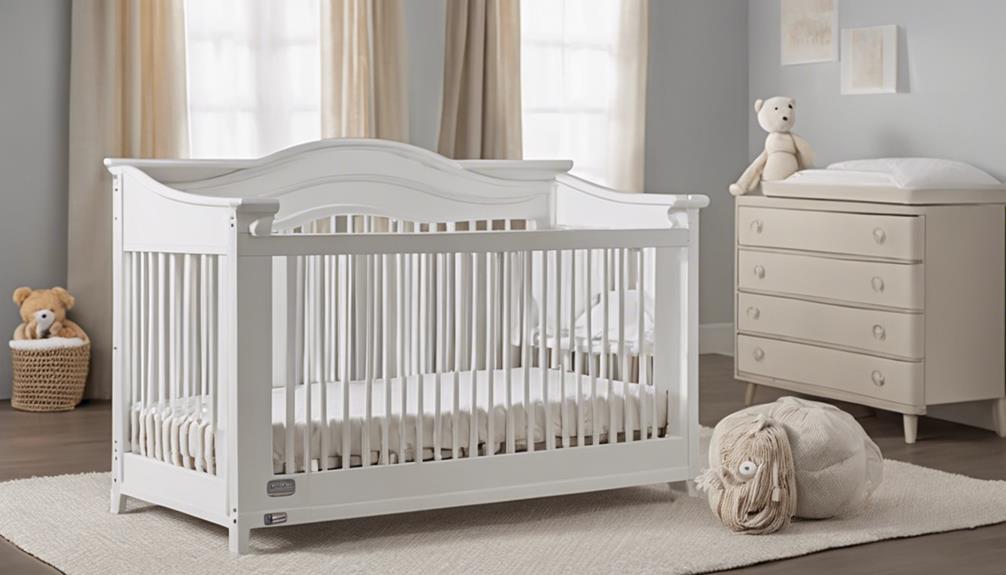
Wondering how to guarantee a safe sleep environment for your newborn in a Pack 'N Play? When it comes to your precious baby's sleep, ensuring safety is paramount. Here are three essential safe sleep practices to keep in mind:
- Back to Sleep: Always lay your newborn on their back to sleep in the Pack 'N Play. This position helps reduce the risk of SIDS, providing a safer sleep environment for your little one.
- Firm Mattress: Opt for a firm, snug-fitting mattress with no gaps in the Pack 'N Play. A proper mattress supports your baby well and minimizes the risk of suffocation or entrapment during sleep.
- Room Sharing: Share a room with your newborn to monitor their sleep closely. Room sharing not only allows you to keep a close eye on your baby but also promotes a strong sense of security and comfort for both you and your little one.
Pack and Play Attachment Safety
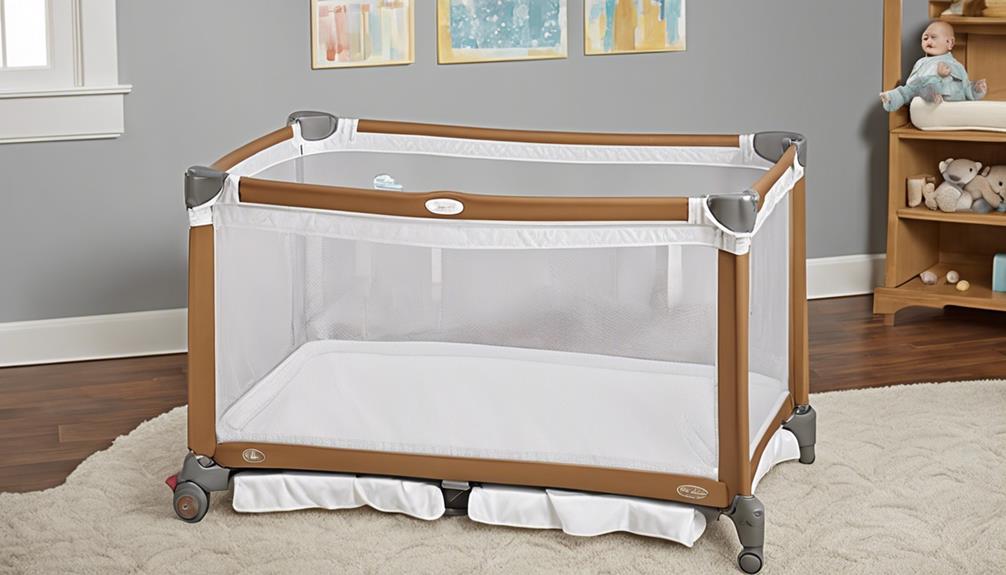
Ensuring the safety of your newborn while using Pack 'N Play attachments is important for creating a secure sleep environment. When using attachments like bassinets or changing stations in your Pack 'N Play, it's critical to follow safe sleep practices. For supervised diaper changes, these attachments are safe to use. However, once your baby starts rolling, it's best to switch them to the bottom play area on a firm, flat surface to prevent any accidents.
Here's a helpful table to guide you on Pack 'N Play attachment safety:
| Attachment | Safety Guidelines | Recommended Usage |
|---|---|---|
| Full-sized Bassinets with Integrated Padding | Ensure safe infant sleep in Pack 'N Plays | Use for supervised sleep and naps |
| Half-sized Bassinets or Changing Stations | Avoid unsupervised sleep in these attachments | Reserve for supervised diaper changes only |
| Manufacturer's Recommendations | Always follow instructions for safe attachment use | Prioritize safety and adhere to guidelines |
Remember to always prioritize your baby's safety and follow the manufacturer's recommendations for secure attachment usage.
Transitioning Out of Pack and Play Sleep

As your baby grows and develops, their safety during sleep remains a top priority, necessitating a smooth moving out of the Pack 'N Play when they exceed 35 inches or 30 pounds.
- Safety First: Moving your baby out of the Pack 'N Play is essential for their safety as they outgrow its size and weight limits.
- Comfort Matters: A crib provides more space for your growing baby, preventing them from feeling cramped and uncomfortable during sleep.
- Monitoring Growth: Keeping track of your baby's size and weight is important in determining the right time to make the move to a crib.
It's important to pay close attention to your baby's development to ensure a safe and comfortable sleeping environment. Moving to a crib when your baby no longer fits comfortably in the Pack 'N Play is a natural progression that supports their ongoing sleep needs. By monitoring their growth rate and addressing safety concerns promptly, you can create an environment that promotes restful and secure sleep for your little one.
Conclusion
To summarize, when it comes to newborn sleep safety, the Pack 'N Play guide offers essential tips and practices to create a secure sleep environment for your little one. By following these guidelines, you can rest assured that your baby is sleeping soundly and safely.
Remember, a peaceful night's sleep for your baby means peace of mind for you as well. Sweet dreams to all the little ones out there!
Nancy combines her love for writing with a deep understanding of the diverse dynamics of family life. As a parent, she brings personal experience and empathy to her work, covering topics from early childhood to the teenage years. Nancy’s work is driven by the belief that every family’s story is unique, and sharing these stories can inspire and support others on their parenting journey.
Stroller
Why Do Babies Need a Stroller?
Having a stroller for your baby is essential for their safety and comfort, but there's more to discover about its benefits and features.
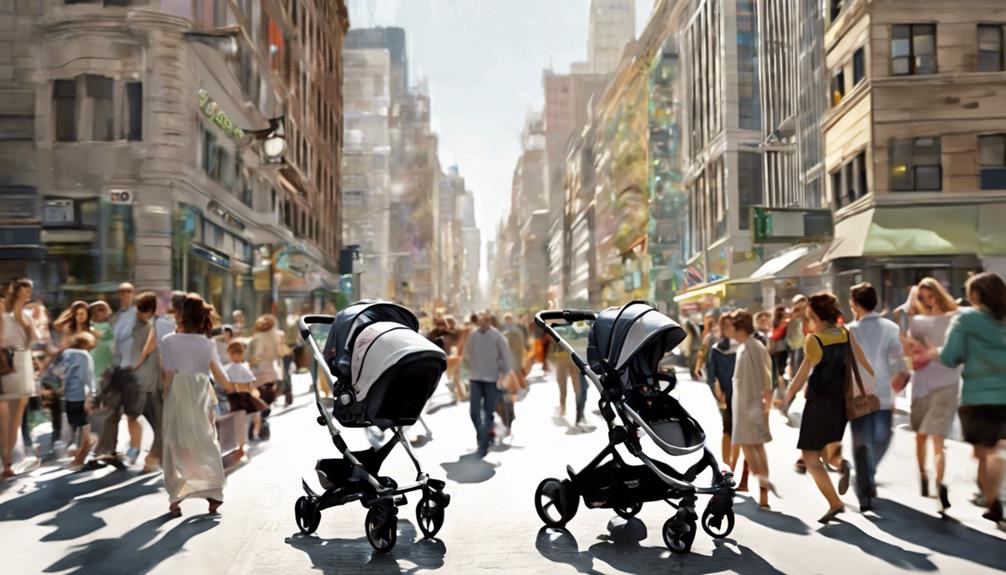
Babies need strollers for safe and easy transportation in different places. Strollers help parents move around effortlessly and create a comfortable spot for napping while on the move. They offer a secure environment, making it simple to handle crowded areas and rough surfaces. Strollers come with safety features like harnesses and sturdy frames, ensuring babies are protected at all times. Additionally, strollers provide storage for essential items, supporting an active lifestyle without causing fatigue. Exploring more about the benefits and features of strollers can enhance your parenting experience.
Key Takeaways
- Safely transport babies in various settings with ease.
- Provide a cozy and nap-friendly environment for babies on the go.
- Enable parents to navigate crowded places and uneven surfaces comfortably.
- Offer storage options for essential items during outings.
- Support an active lifestyle without causing fatigue for parents.
Benefits of Using a Stroller
Using a stroller guarantees that parents can safely and comfortably transport their babies in various settings without causing strain on their bodies. The flexibility of strollers allows us to navigate crowded places or uneven surfaces with ease, ensuring our baby's safety while promoting our convenience.
Instead of carrying our little one for extended periods and risking fatigue, strollers offer a practical solution that supports our active lifestyle. The stroller's storage options make it a versatile companion, holding essential items like diapers, wipes, snacks, and toys within arm's reach. This convenience enables us to focus on enjoying quality time with our baby during outings without worrying about carrying extra bags.
Additionally, strollers provide a cozy and nap-friendly environment for our baby on the go, ensuring they stay well-rested and content while we engage in outdoor activities. The comfort and security that strollers offer make them an indispensable tool for parents looking to explore the world with their precious little ones.
Safety Features of Baby Strollers
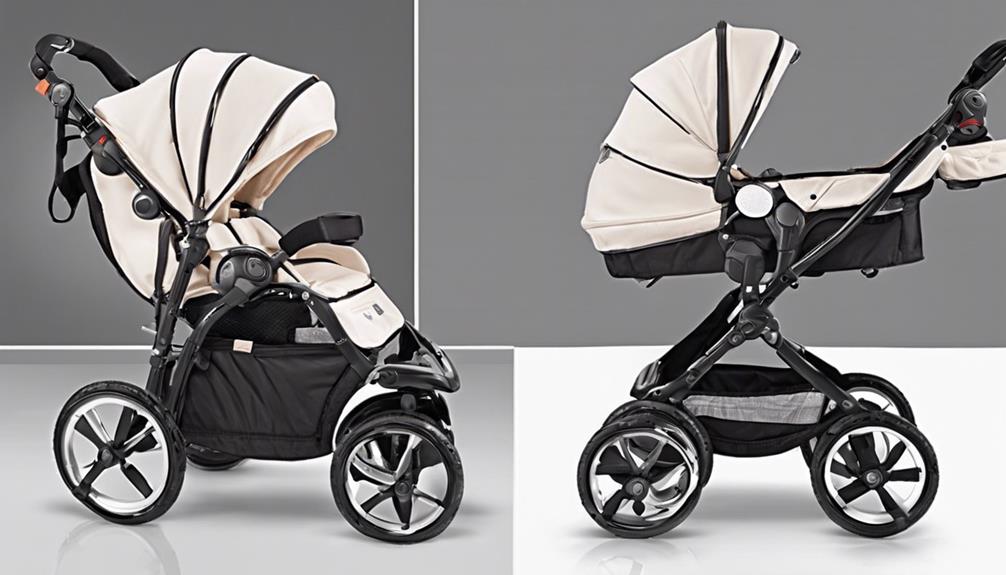
Baby strollers are equipped with essential safety features to guarantee the well-being of infants during transportation. Harnesses are included to make sure that babies are securely strapped in, providing peace of mind for parents knowing their little ones are safe.
Handles and wheels are designed for a good grip and balance, reducing the risk of accidents, especially in crowded areas or on uneven surfaces. Additionally, strollers are crafted with sturdy frames and reclining seats to offer added protection and comfort.
These safety features work together to create a secure environment for babies while on the go, allowing parents to focus on enjoying outings with their little ones. Strollers not only provide a convenient mode of transportation but also prioritize the safety and security of infants, making them an essential tool for families on the move.
Convenience of Stroller Storage
With strollers offering ample storage space for essential baby items, parents can easily organize and carry all necessary supplies for outings and errands. Strollers come equipped with storage baskets under the seat, making them practical for holding diapers, wipes, clothing, snacks, and other baby essentials. Additionally, accessories like cup holders and diaper bags can be added to strollers for extra storage convenience, ensuring that parents have everything they need within reach.
The storage space provided by strollers allows parents to manage daily activities with ease, eliminating the need for bulky bags or carrying multiple items separately. By utilizing the storage compartments of strollers, parents can keep everything organized and readily accessible while on the go. This convenience is especially beneficial during outings, as it allows parents to focus on enjoying the time spent with their little ones without the hassle of juggling multiple bags or items. Strollers truly enhance the overall experience by simplifying the process of carrying and accessing essential baby supplies.
Mobility and Flexibility With Strollers

Strollers offer easy maneuverability, giving parents the freedom to explore the world with their little ones in tow. They provide a convenient way to navigate different environments while engaging in daily activities.
With a stroller, parents can maintain their active lifestyle and make sure that their babies are always close by for bonding and exploration.
Easy Maneuverability in Strollers
Getting around busy streets and uneven terrains becomes effortless with the easy maneuverability that modern strollers offer. Strollers provide the flexibility to move around with ease while ensuring the safety of your little one. Features like swivel wheels and adjustable handles enhance maneuverability, making navigation a breeze in crowded places.
Stroller accessories like cup holders and storage baskets add convenience to your outings, keeping all essentials within reach. Additionally, strollers with one-hand folding mechanisms make storage and transportation a cinch, perfect for parents on the go. Lightweight designs and compact structures further enhance maneuverability, allowing smooth navigation through tight spaces or during travels.
With these features, modern strollers truly make exploring the world with your baby a comfortable and convenient experience.
Freedom to Explore
Pushing a stroller allows us to effortlessly explore diverse environments, fostering our baby's curiosity and development. A baby stroller gives you the flexibility to move around with ease, providing a great deal of mobility for both you and your little one.
With the baby safely strapped in, you can consider a stroller as a valuable tool for outdoor activities, walks in the park, or even trips to social gatherings. This freedom to explore different surroundings not only exposes your baby to new sensory experiences but also encourages independence and physical activity.
Choosing the Right Stroller for Your Baby
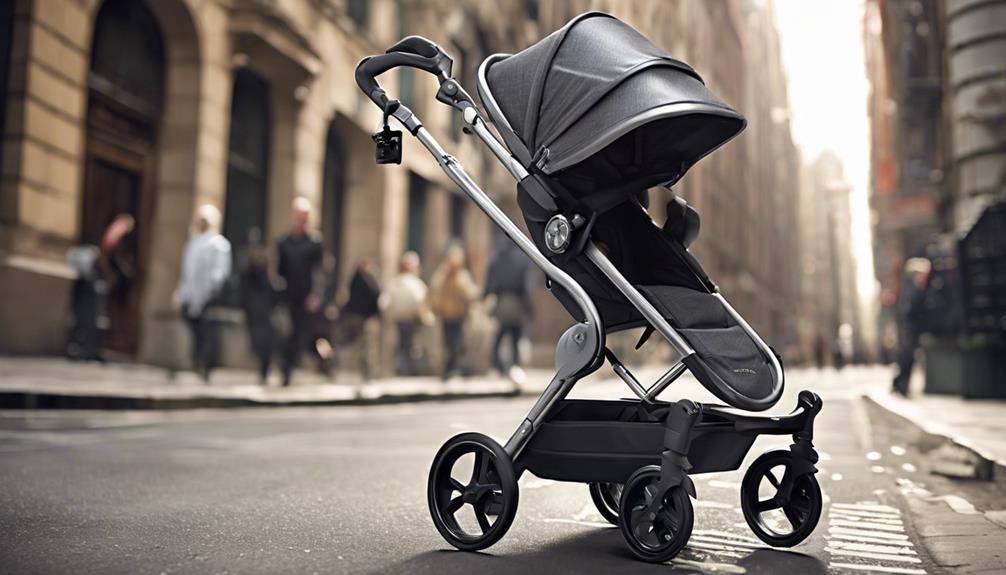
When selecting a stroller for your baby, it's important to take into account features like a fully reclining seat for newborns or good support for babies sitting upright.
Safety and comfort are vital, so look for strollers with features like a five-point harness and cushioning.
Taking these factors into consideration guarantees that your baby will have a safe and enjoyable stroller experience.
Stroller Features to Consider
Considering the safety and comfort of your newborn, selecting a stroller with a fully reclining seat is vital. This feature guarantees your baby is safe and comfortable, especially when they need to lie flat.
If you opt for a travel system, look for one that includes a stroller seat suitable for newborns or a bassinet attachment. Avoid using jogging strollers for infants; instead, prioritize safety features like a five-point harness to keep your baby secure.
Choose a stroller with multiple recline positions to support your baby sitting upright as they grow. It's important to find a stroller that meets your baby's specific age and developmental needs, providing the necessary support and comfort for their stage of growth.
Safety and Comfort Essentials
To guarantee your baby's safety and comfort while on the go, selecting the right stroller is crucial. Strollers provide a secure environment with harnesses that keep your little one safe and prevent accidents.
The appropriate stroller ensures that your baby can nap comfortably during outings, promoting their overall well-being. It also offers you peace of mind in crowded places, making it easier to transport your baby.
Opting for a stroller with ample storage space helps you stay organized and carry all the essential items your baby needs. With handles and wheels designed for good grip and balance, strollers safeguard the safety and security of your baby while you're on the move.
Transitioning Out of a Stroller
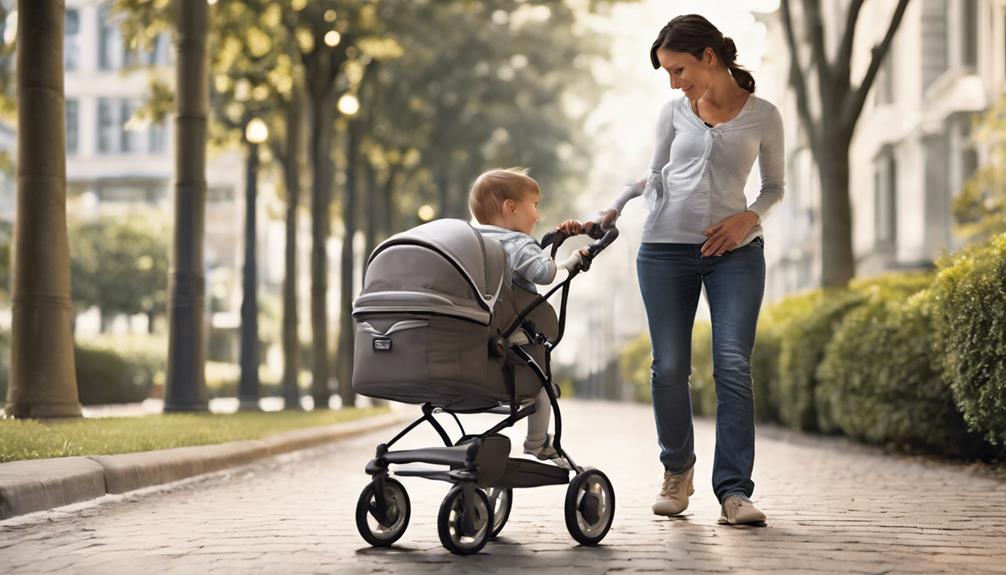
As toddlers reach around 3 years old, we gradually encourage them to shift out of the stroller to promote independence and active exploration. It's important to limit stroller use during this time to encourage active play and development. By decreasing reliance on the stroller, toddlers can gain confidence in walking and exploring their surroundings. Shifting out of a stroller allows them to engage more with their environment, fostering the development of motor skills.
Encouraging toddlers to walk more and explore on foot not only supports their physical development but also enhances their cognitive abilities. It gives them the opportunity to interact with different stimuli in their surroundings, stimulating their senses and curiosity. This shift period is an important step in promoting independence and self-confidence in toddlers. So, as caregivers, we should support and guide them through this process, allowing them to thrive and grow through active exploration.
Everyday Uses of Baby Strollers
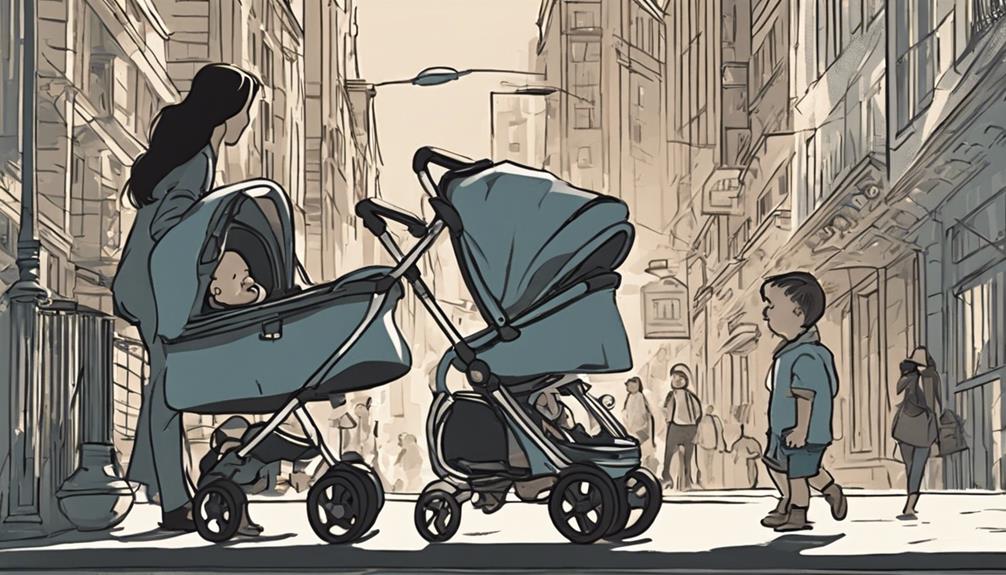
When out and about with our little ones, baby strollers serve as a practical and essential tool for ensuring convenience and comfort. Baby strollers provide a safe and secure way to transport babies during daily errands and outings. They offer a convenient solution for parents by allowing them to carry essential items like diapers, wipes, and snacks easily. Strollers also enable babies to nap comfortably on the go, ensuring they get the rest they need while out and about.
With storage options like baskets and cup holders, strollers make it easy for parents to organize baby essentials efficiently. Additionally, using a stroller gives parents relief from carrying heavy babies, preventing strain on their arms and back during extended outings. Overall, baby strollers enhance the ease and safety of outings, making them an indispensable tool for parents on the move.
Importance of Strollers for Child Safety
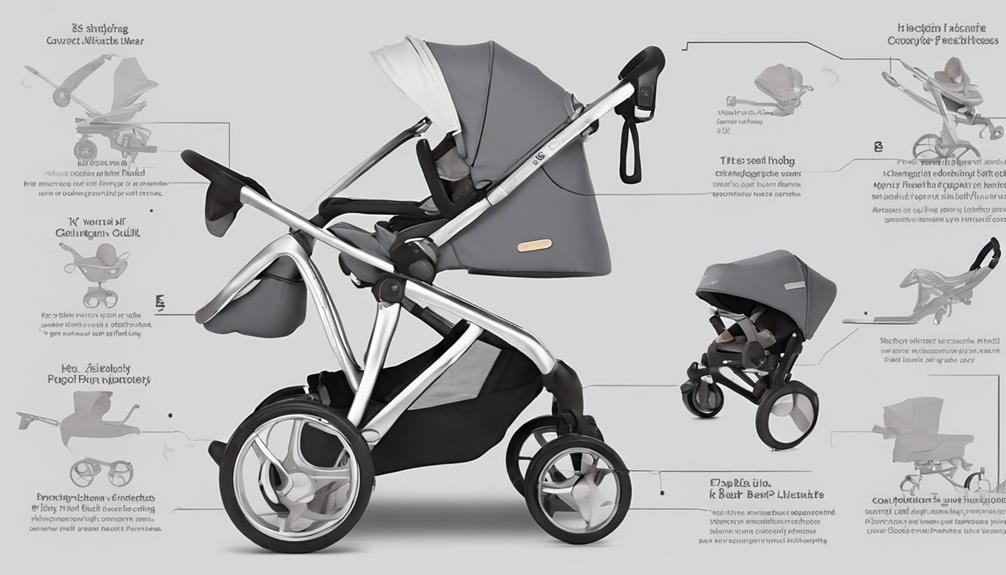
Why do strollers play an important role in ensuring child safety during outings and walks?
Strollers are vital for maintaining the safety of our little ones while we're on the move. They offer a secure and comfortable space, equipped with harnesses that keep babies snugly strapped in, providing peace of mind to parents.
The protection strollers provide from potential hazards and accidents in crowded areas or uneven terrain is invaluable. By using a stroller, we can prevent falls and injuries, ensuring that our babies remain safe and sound.
The convenience of strollers not only makes outings more manageable but also creates a controlled environment where our children can explore comfortably. With strollers, we can enjoy our walks knowing that our babies are protected and cared for.
Frequently Asked Questions
Is It Really Necessary to Have a Stroller?
Yes, it's necessary to have a stroller. It provides safety, prevents fatigue, and offers convenience. We can manage tasks easier while keeping our baby close. Plus, strollers promote better rest and help us navigate crowded areas effortlessly.
What Is the Point of a Stroller?
Strollers are like a trusty sidekick, making outings smoother for us parents. They offer a cozy spot for our little ones, ease the load of carrying them, and provide storage for all the baby essentials.
Do Parents Really Need a Stroller for Their Baby?
We absolutely need a stroller for our baby. It makes daily life easier, prevents physical strain, and keeps our little one safe in crowded places. It's a must-have for managing errands and ensuring our baby's comfort.
Can I Have a Baby Without a Stroller?
We've found that it's entirely possible to navigate babyhood without a stroller. Many opt for baby-wearing for its closeness and convenience. Testing strollers firsthand helps make informed choices. Each family's needs vary.
Conclusion
In summary, babies need strollers because, well, they can't exactly walk on their own yet.
Strollers provide a safe and convenient way to transport your little one while keeping them secure and comfortable.
With various options available, choosing the right stroller is essential for both parent and child.
So, embrace the stroller life and let your baby ride in style!
With a rich background in writing and a keen interest in child development, she specializes in creating insightful, compassionate content that speaks directly to parents’ concerns and aspirations. Margaret believes in the power of shared experiences to bring comfort and confidence to parents everywhere.
Breastfeeding/Formula Feeding
Managing Reflux: Breastfeeding Diet Tips
Balancing your breastfeeding diet with reflux in mind can make a world of difference for your baby – discover how in our essential guide.

When it comes to managing reflux, we all know how challenging it can be to navigate the world of breastfeeding and dietary adjustments. But fear not, as we have some valuable tips to help ease your baby's discomfort and support their digestive health.
From simple dietary tweaks to understanding the impact of your food choices, our practical advice will empower you to make informed decisions for both you and your little one. Whether you're a new mom or a seasoned pro, these insights could be just what you need to find relief and nurture your baby's well-being.
Key Takeaways
- High fiber foods aid digestion for reflux management.
- Avoid trigger foods like cow's milk and soy to reduce symptoms.
- Thicken breast milk with rice cereal for easier digestion.
- Maintain a food diary to track triggers and symptoms accurately.
Foods to Include in Breastfeeding Diet for Reflux
When managing reflux through a breastfeeding diet, including foods high in fiber, lean proteins, probiotics, Omega-3 fatty acids, and antioxidants can help alleviate symptoms and promote digestive health.
For breastfed babies experiencing reflux, pondering the impact of a mother's diet on their digestive system is crucial. Fiber-rich foods like fruits, vegetables, and whole grains aid in digestion, reducing the likelihood of reflux episodes.
Lean proteins such as chicken, turkey, and fish support muscle function, contributing to overall health for both mother and baby. Probiotic-rich foods like yogurt and kefir can help maintain a healthy balance of gut bacteria in babies, potentially reducing reflux symptoms.
Additionally, incorporating Omega-3 fatty acids from sources like salmon and walnuts can help decrease inflammation, which may alleviate discomfort associated with reflux in breastfed infants. Antioxidant-rich foods like berries, spinach, and nuts can support the immune system, providing added benefits for both mother and baby through breast milk.
Impact of Maternal Diet on Baby's Reflux
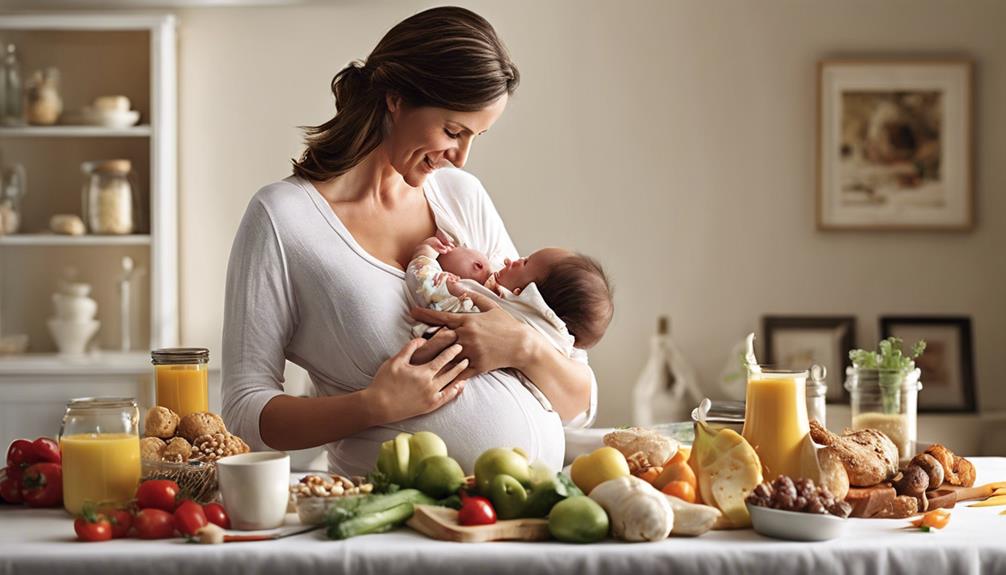
Maternal dietary choices play a significant role in influencing a breastfed baby's experience with reflux, as allergens passed through breast milk can impact the occurrence and severity of reflux symptoms. When considering how your diet affects your baby's reflux, it's crucial to be mindful of what you consume.
Here are some practical tips to help manage your baby's gastroesophageal reflux:
- Avoid Trigger Foods: Certain foods like cow's milk and soy can exacerbate reflux symptoms in breastfed babies.
- Limit Acidic, Spicy, and Fatty Foods: Steering clear of these types of foods can help reduce the likelihood of reflux in your little one.
- Thicken Breast Milk: Adding rice cereal to breast milk can help thicken it, potentially easing reflux symptoms for your baby.
- Keep a Food Diary: Tracking what you eat and your baby's reflux symptoms can help you identify specific triggers in your diet that affect your baby.
- Consult a Healthcare Provider: If you're unsure about which dietary changes to make, consult with a healthcare provider for personalized advice on managing your baby's reflux through your diet.
Dietary Strategies for Managing Reflux Symptoms
To effectively manage reflux symptoms in breastfed babies, it's essential to implement dietary strategies that focus on avoiding trigger foods and promoting easier digestion. When breastfeeding a baby with reflux, it's recommended to thicken breast milk with rice cereal to help reduce episodes of reflux. Additionally, it's advised to steer clear of acidic fruits, tomatoes, spicy foods, and high-fat foods in your diet as these can exacerbate reflux symptoms in your baby. Opting for smaller, more frequent feeds and ensuring your baby stays upright after feedings can also aid in minimizing reflux episodes.
Considering the impact of cow's milk on reflux in breastfed babies is important. Some babies may be sensitive to cow's milk proteins transferred through breast milk, leading to increased reflux symptoms. Consulting with a healthcare provider to explore the possibility of eliminating cow's milk from your diet can be beneficial in managing your baby's reflux. By maintaining a food and symptom diary, you can track any patterns and identify specific triggers that may be causing discomfort for your baby.
Best Practices for Breastfeeding Moms With Reflux Babies

Breastfeeding moms of babies with reflux can benefit from implementing best practices that focus on identifying triggers, promoting comfort, and optimizing feeding techniques. When dealing with reflux disease in breastfed babies, it's crucial to create a supportive environment that aids in managing their symptoms effectively. Here are some best practices to take into account:
- Maintain a Food and Symptom Diary: Tracking what you eat and your baby's reactions can help pinpoint potential triggers for reflux episodes.
- Eliminate Common Allergens: Removing cow's milk and soy from your diet may alleviate reflux symptoms in your breastfed baby.
- Ensure a Good Latch: A proper latch and minimizing air intake during feedings can reduce discomfort for babies with reflux.
- Implement Elimination Diets: Gradually reintroducing foods can help identify and manage any food intolerances your baby may have.
- Opt for Frequent Feedings: Offering smaller, more frequent feedings can help prevent overfeeding and reduce the likelihood of reflux episodes.
Holistic Nutrition Approaches for Reflux Management
When managing reflux in breastfeeding infants, incorporating holistic nutrition approaches can greatly impact symptom reduction and overall well-being. Baby Reflux Lady, it's vital to focus on whole, unprocessed, and organic foods to prevent acid reflux in babies. By following elimination diets, we can identify trigger foods causing our baby's reflux, ultimately reducing episodes of reflux and minimizing our baby's pain. It's important to keep our baby upright after feedings to help prevent the regurgitation of stomach contents, which can worsen reflux symptoms. Holistic nutrition emphasizes nutrient-dense foods that promote ideal health for both mother and baby, steering clear of processed and refined foods known to trigger acid reflux in infants. By understanding and implementing holistic nutrition practices, we can support our baby's digestive health and well-being effectively.
| Holistic Nutrition Approaches | Benefits |
|---|---|
| Focus on whole, unprocessed, organic foods | Prevents acid reflux |
| Utilize elimination diets to identify trigger foods | Reduces reflux episodes |
| Keep baby upright after feedings | Minimizes regurgitation of stomach contents |
Frequently Asked Questions
What Foods Should Breastfeeding Moms Avoid With Reflux?
We should avoid acidic fruits like apples and oranges, tomatoes, spicy foods, caffeine, and fatty foods when breastfeeding babies with reflux. These can worsen symptoms. Let's stick to reflux-friendly options to help our little ones feel better.
How Do I Feed My Breastfed Baby With Acid Reflux?
We feed our breastfed baby with acid reflux in an upright position to reduce regurgitation, consider smaller, more frequent feedings, thicken breast milk with rice cereal, burp frequently, and avoid acidic, spicy, and high-fat foods in our diet to help ease symptoms.
What Makes Reflux Worse in Breastfed Babies?
Overfeeding, rapid feeding, trigger foods like dairy or caffeine, poor latch, bad positioning, maternal stress, and inconsistent feeding schedules contribute to worsening reflux in breastfed babies. Being mindful of these factors can help manage reflux symptoms effectively.
What Can I Eat to Reduce Baby Reflux?
We can eat non-acidic fruits like bananas and melons, lean proteins such as chicken and fish, whole grains like brown rice and oats, and vegetables like spinach, broccoli, and carrots to help reduce baby reflux.
Conclusion
Just like a gardener tends to their garden with care, breastfeeding moms can nurture their babies by managing reflux with a balanced diet. By planting the right foods and avoiding common triggers, moms can help their little ones thrive and grow without the discomfort of reflux.
Remember, just as a well-tended garden blossoms beautifully, a well-nourished baby can flourish and thrive with the right dietary support. So, let's keep feeding our babies with love and care, one meal at a time.
With a rich background in writing and a keen interest in child development, she specializes in creating insightful, compassionate content that speaks directly to parents’ concerns and aspirations. Margaret believes in the power of shared experiences to bring comfort and confidence to parents everywhere.
-

 Third Trimester1 month ago
Third Trimester1 month agoManaging Nausea in the Third Trimester: A How-To Guide
-

 Third Trimester1 month ago
Third Trimester1 month agoSafe Third Trimester Exercise Guide for Moms-to-Be
-

 Breastfeeding/Formula Feeding4 weeks ago
Breastfeeding/Formula Feeding4 weeks agoOvercoming Formula Feeding Guilt: 10 Ways to Feel Empowered
-

 First Trimester3 weeks ago
First Trimester3 weeks agoDramamine Use in Pregnancy: First Trimester Guide
-

 Breastfeeding/Formula Feeding2 months ago
Breastfeeding/Formula Feeding2 months agoDairy-Free Breastfeeding Diet: A Comprehensive Guide
-

 Newborn Care1 month ago
Newborn Care1 month agoEssential Newborn Care: A How-To Guide for Parents
-

 Newborn Care1 month ago
Newborn Care1 month agoNewborn Care Basics: A Step-by-Step Guide
-

 Third Trimester2 months ago
Third Trimester2 months agoWhat Causes Low Platelets in Pregnancy During the Third Trimester?
